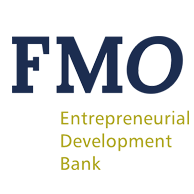

Certain interest rate benchmarks, such as LIBOR, the London Interbank Offered Rate, will be discontinued after 2021. LIBOR is embedded in many aspects of Financial Institutions, such as loan contracts, funding and interest rate derivatives, pricing and risk management. Post-crisis development led to the introduction of the Benchmark regulation (BMR) and prompted regulators to decide to discontinue LIBOR and to replace with alternative reference rates. This interest rate benchmark reform may impact the products and services which are currently provided to you.
Interest rate benchmarks are widely used in the financial industry as reference rates in derivative, bond and floating rate loan contracts for calculating the amount of interest payable. Furthermore, these interest benchmarks are used in the valuation of financial products. Interest rate benchmarks must be robust and reliable to serve their purpose.
LIBOR, the London Interbank Offered Rate, the most common benchmark, originates from the 1980s. LIBOR is provided for five currencies (USD, GBP, EUR, CHF and JPY). Since 1999, EURIBOR is the benchmark indicating the interbank funding rates in the euro market. Interest benchmarks are published by benchmark providers such as ICE (publishing LIBOR) and EMMI (publishing EURIBOR, EONIA and €STR).
The interest rate benchmarks are based on the rates banks lend to each other in the interbank market. Interbank lending has decreased materially since the credit crisis in 2008-2009 and has been subject to manipulation (Libor scandal 2012). Financial regulatory authorities have concerns that the benchmark rates may no longer be reliable or representative. The Benchmark Regulation, adopted by the European Parliament in 2016, was one of the concrete actions to reform the publication and use of benchmarks, and made the Financial Conduct Authority (which is tasked with overseeing LIBOR) decide to discontinue LIBOR after 2021. The reform will lead to more transaction-based and more robust benchmarks.
This transition is driven by market participants who have formed working groups for each currency. The regulators are convening, attending and observing these working groups. The USD LIBOR transition is addressed by the Alternative Reference Rates Committee (ARRC), which consists of around 40 financial services companies and associations. It serves as a forum to coordinate and track planning across cash and derivatives products and market participants currently using USD LIBOR. Comparable working groups exist for LIBOR in other currencies and the Working group on euro risk-free rates addresses the reform of EURIBOR and EONIA.
LIBOR publication in its current form as a compliant benchmark will discontinue after 2021. On March 5th, the Financial Conduct Authority (FCA) announced the future cessation of USD LIBOR by end 2021 (1 week and 2 months tenors). For legacy USD LIBOR contracts, 1,3 and 6 months USD LIBOR will be published until 30-Jun-2023.
The financial markets and its participants will come to alternative reference rates for the discontinued benchmarks before the end of 2021. (LIBORs) or thereafter. The alternative reference rate and its provider need to be compliant with the Benchmark Regulation. Some of the benchmarks (e.g. EURIBOR by October 2019 ) can be reformed by making the existing methodology more robust in such a way that it can continue as formal benchmark under Benchmark Regulation.
Discontinued benchmarks will be replaced with alternative reference rates. This may impact the products and services which are currently provided to you. This may require contract amendment, for example for some cases of floating rate loan contracts. When this applies to you, FMO will timely inform you and service the transition in close consultation with all stakeholders. FMO is continuously monitoring the markets, since the reform is an ongoing process to step by step decrease the uncertainties about the transition, process and timing. FMO has in place a robust action plan addressing all work to be done within the bank as well as the communication to our clients. Existing benchmarks will not be discontinued before the end of 2021. For more information regarding the services FMO provides you, please do not hesitate to contact us.
To update our customers in a consistent way on the process in the transition towards a new USD benchmark rate and its interest rate calculation methodology, we organized two LIBOR $OFR Transition Webinars on 13 October 2020 and 12 October 2021, together with our partners DEG and Proparco.
During the webinars we shared the most SOFR recent market developments in the loan, funding and the derivatives market. We focussed on the differences between USD LIBOR and SOFR and explained the several SOFR variations we see in the loan market. Furthermore, we elaborated how new SOFR loans are structured and the contractual implications in the transitioning away from USD LIBOR. We explained our clients that the LIBOR SOFR transition will affect the base rate only.
The questions asked during the webinar helped us to further understand the (information) needs of our customers. If you missed the webinar, you can watch it by clicking on the video below or review the Frequently Asked Questions document.
For further reading on this topic, we would like to refer you to the websites of ARRC and LMA: